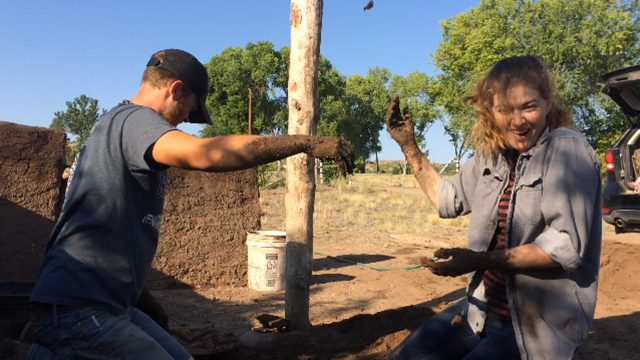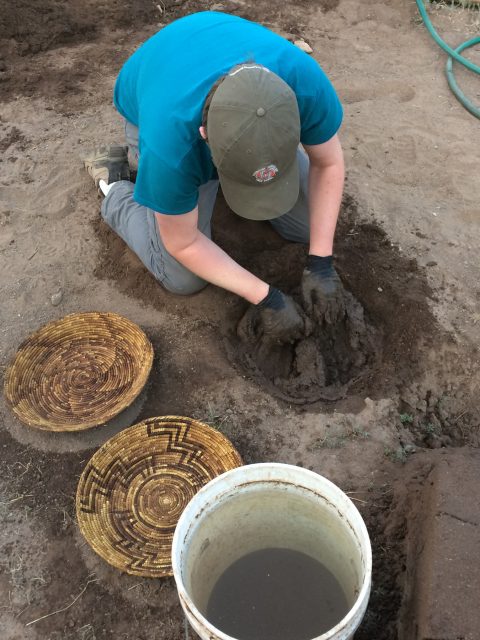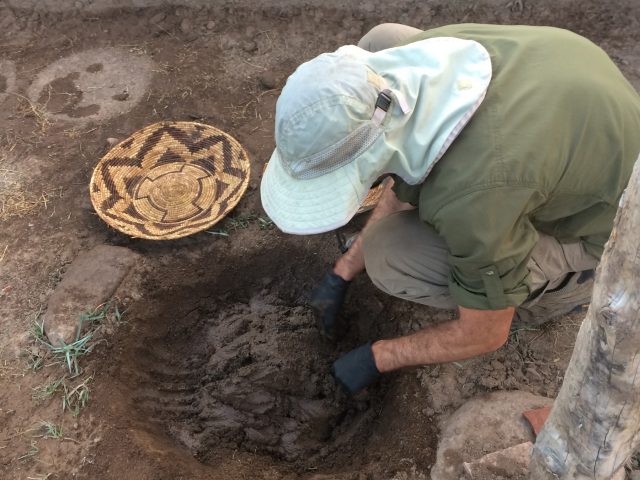- Home
- >
- Preservation Archaeology Blog
- >
- More Mud!
(July 26, 2017)—By the end of last year’s field school, we had started two walls, and one was up to about six layers high. We mixed the mud with our hands in basin-shaped pits and placed it onto the wall in blobs. Then we smooshed the mud into the shape of the wall. This technique is known as “puddled adobe.”
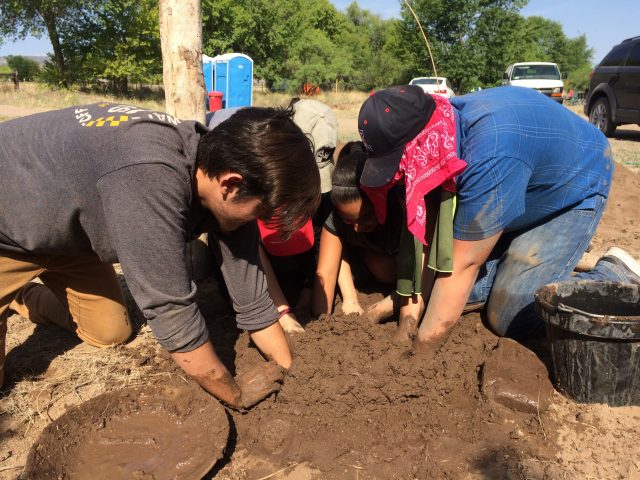
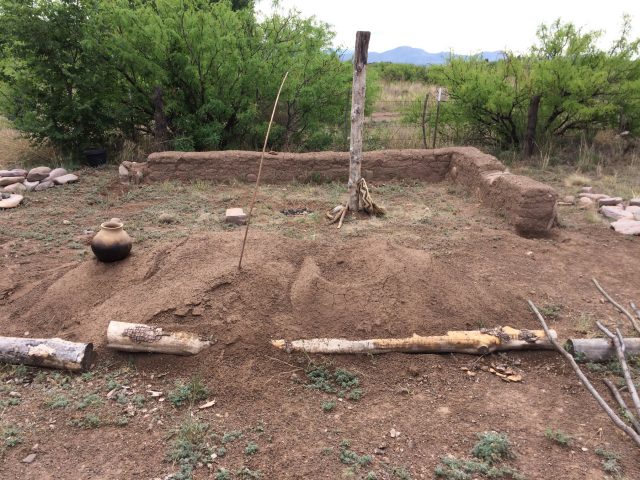
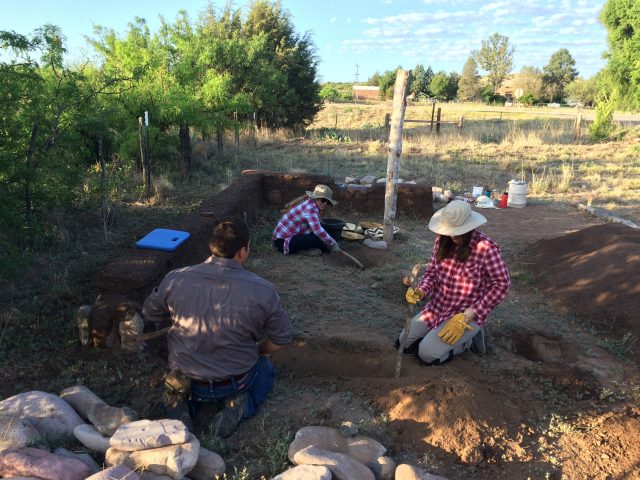
We spent half-days working on the structure with students this summer—by noon it would be so hot, we had to retreat to projects we could do in the shade.
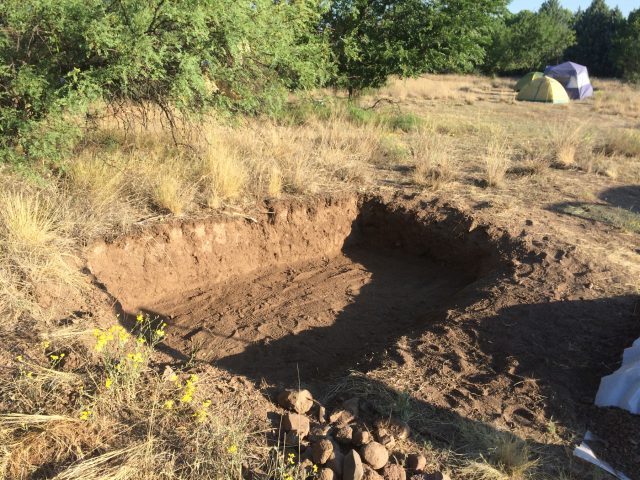
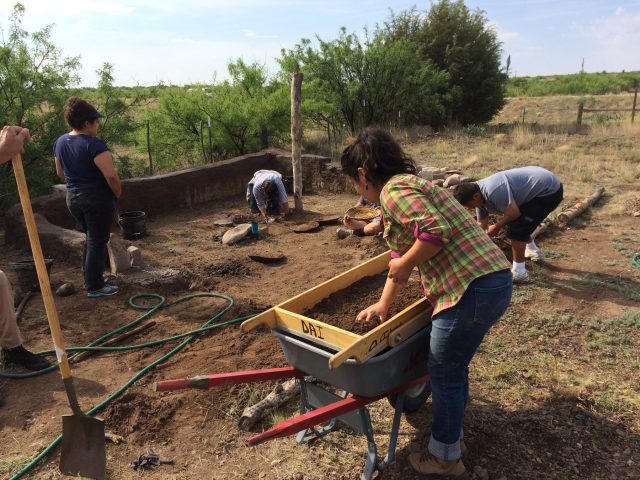
This year, I decided to screen out larger gravels in order to make the mud we are mixing gentler on our hands. There is no evidence people did this in the past, but it made life a lot easier for us!
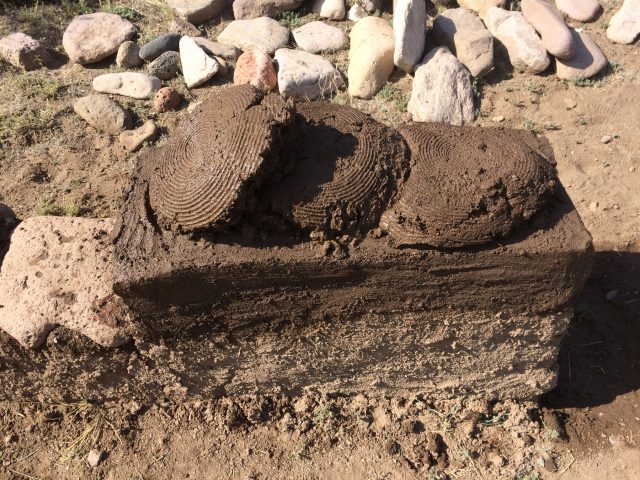
We found that dumping loads of mud on the wall and lessening our smooshing made the mud hold its shape better—and it could be laid down in thicker layers.
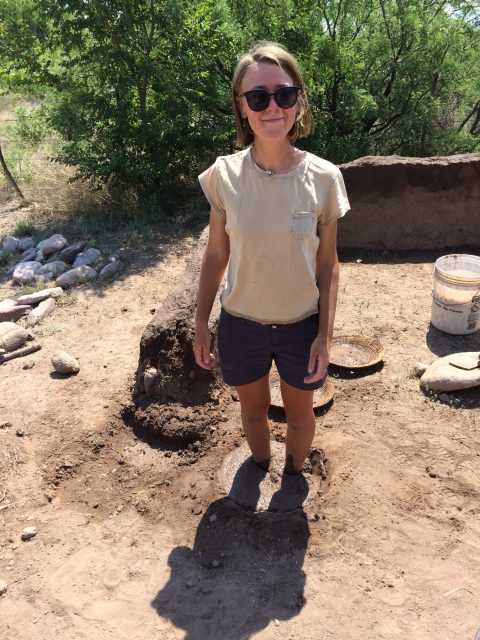 |
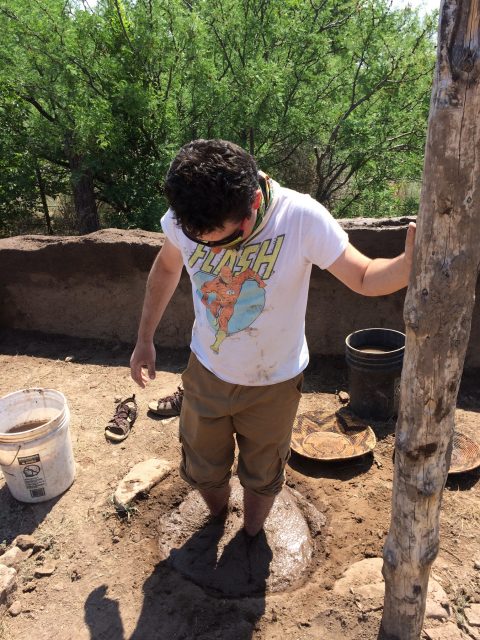 |
There are other techniques to mix the mud. The grape-stomping method works well, but it is hard to get the mud in the bottom of the pit mixed.
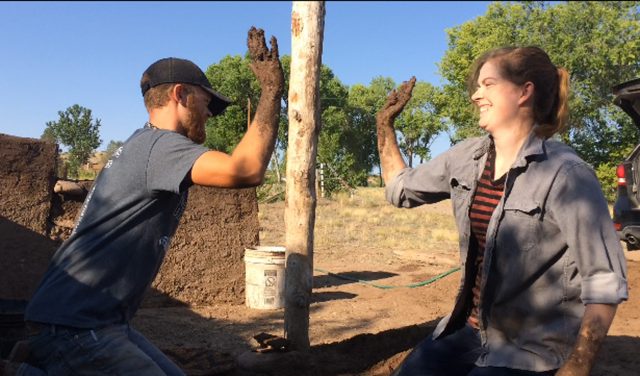
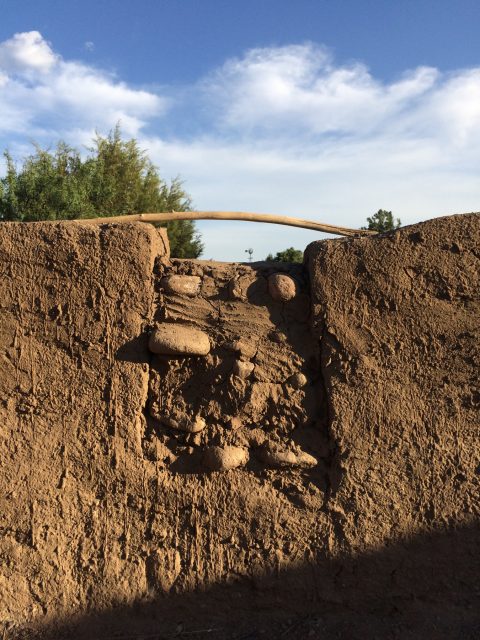
We continued construction of a plugged doorway we had started last year. By the end of this field school season, we had the lintel mudded in.
We mixed the mud to the consistency of thick cookie dough. If it was too soft, it would slump on the wall; if it was too dry, it would crumble when set upon the wall.
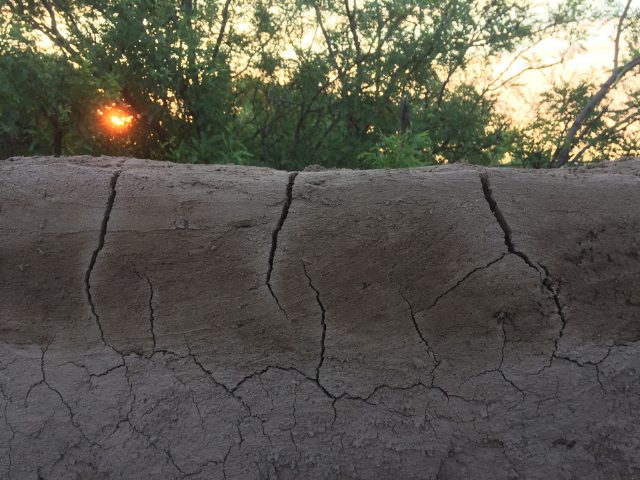
Sometimes small cracks appeared between the dried and moist layers, but for the most part this was minimal, and it did not seem to weaken the wall.
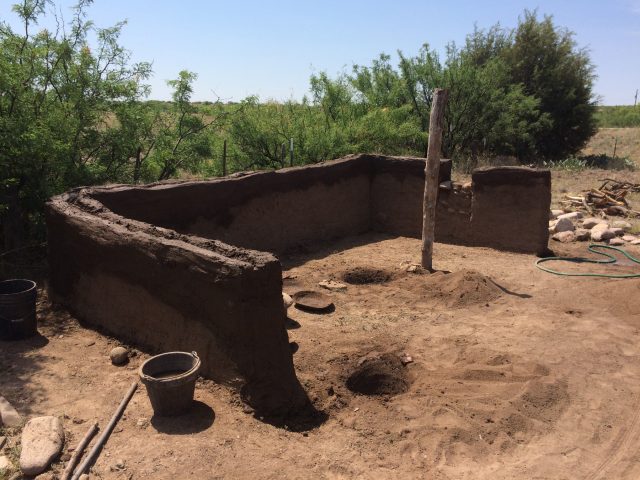
Next year, we will finish up the walls and work on a front wattle-and-daub wall.

